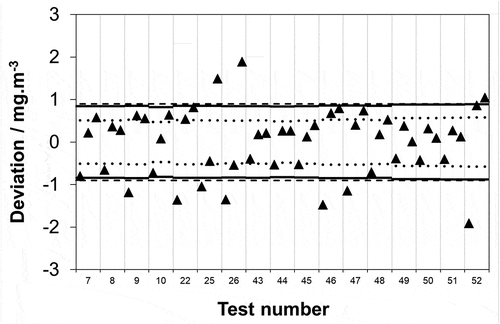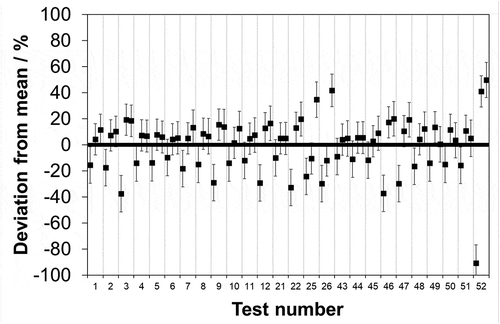Figures & data
Figure 1. Relative deviation of analytical laboratory measurements (■) from reference values of synthetic chloride samples prepared at 5 different emission reference concentrations, 1.9, 3.9, 5.9, 7.7 and 9.8 mg·m−3 (▬) with associated uncertainties reported by laboratories at a confidence level of 95% (k = 2). Laboratory measurements presented as a repeating sequence of laboratory a, b, c, d, e.
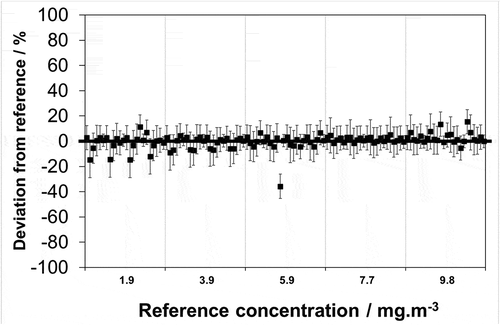
Figure 2. Relative deviation from the mean of analytical laboratory measurements (■) of real chloride samples over a 0–60 mg·m−3 range extracted and collected from a stack simulator facility. Associated uncertainties reported by laboratories at a confidence level of 95% (k = 2).
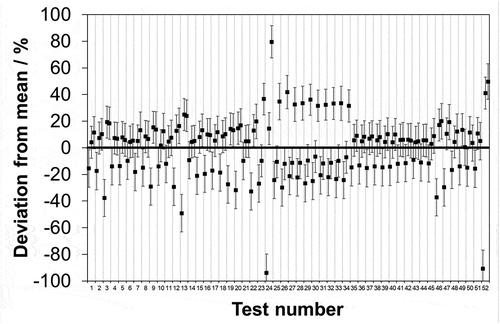
Figure 4. Data reproduced from in units of concentration covering a 0–10 mg·m−3 range. Maximum permissible uncertainty at 95% confidence (–––) as required by EN 1911 for compliance monitoring of waste incinerators in accordance with an IED emission limit value of 10 mg·m−3; uncertainty remaining for analysis after subtracting typical uncertainties attributable to the extraction and collection of HCl from the stack from 75% of the IED requirement (▬), and 50% of the IED requirement (…).

Figure 5. Data reproduced from in units of concentration covering a 0–15 mg·m−3 range. Maximum permissible uncertainty at 95% confidence (–––) as required by EN 1911 for compliance monitoring of waste incinerators in accordance with an IED emission limit value of 10 mg·m−3; uncertainty remaining for analysis after subtracting typical uncertainties attributable to the extraction and collection of HCl from the stack from 75% of the IED requirement (▬), and 50% of the IED requirement (…).
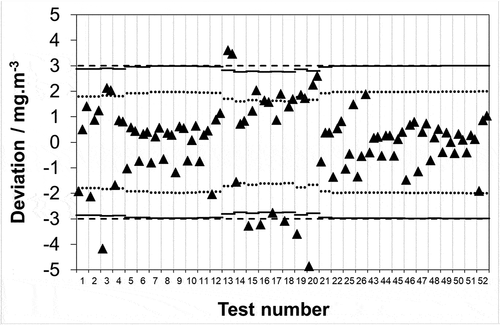
Figure 6. Data reproduced from in units of concentration covering a 0–4.5 mg·m−3 range. Maximum permissible uncertainty at 95% confidence (–––) as required by EN 1911 for compliance monitoring of waste incinerators in accordance with a BAT Conclusions emission limit value of 3 mg·m−3; uncertainty remaining for analysis after subtracting typical uncertainties attributable to the extraction and collection of HCl from the stack from 75% of the IED requirement (▬), and 50% of the IED requirement (…).
